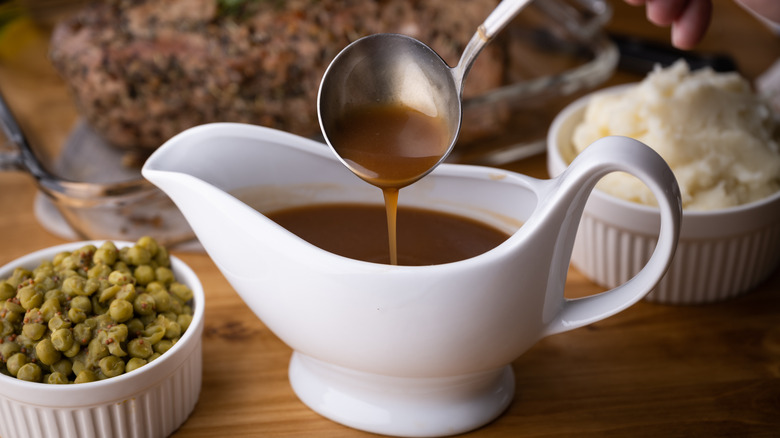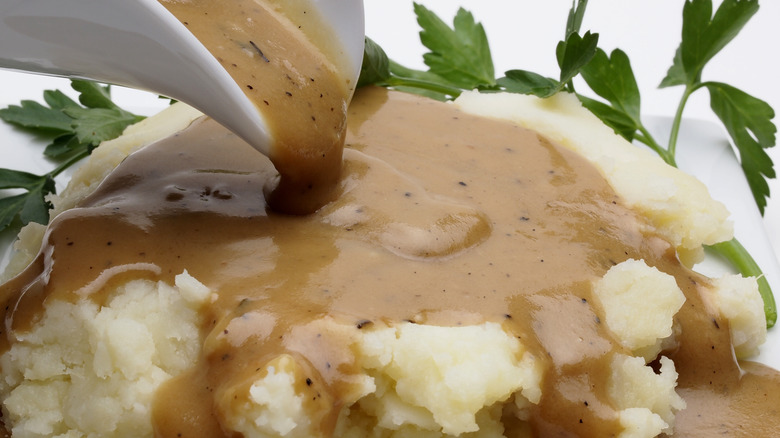The Mistake You're Making With Homemade Gravy Is Where You Cook
When you're cooking up a classic roast dinner with all the fixings, gravy is a must-have on the menu. But how often do you waste time fiddling with thin, flavorless gravy, only to reach for a jar of the less delicious but far more convenient pre-made stuff? The issue you're having with your gravy likely comes down to which pot you're making it in. This has much less to do with the size and shape, and more to do with whether you're starting out with a fresh clean pot, instead of taking advantage of meat drippings in the pan you cooked your meat in.
Whether you're making a pot roast, a turkey, or chicken, you undoubtedly have a pan full of rendered fat, savory juices, aromatics, and seasoning. Too often, these just get tossed aside, and we try to make gravy from little more than boxed broth, flour, and butter, which is a grave gravy mistake. Those drippings add lots of savory flavor and depth to gravy. To get the most out of these tasty morsels, try making your gravy in the same pot or roasting pan where you cooked your meat.
Roasting pan gravy tips and tricks
Once you've removed your roast dinner from the pan, cover it with foil and let it rest. Left in the pan will be all of the fat, fond, and juices you'll need to make gravy. First, always be sure to strain out any chunky vegetables, as you won't want those clumping up in the gravy. Separating the fat from the stock is also a good call, so you can use the rendered fat for the roux, and use the remaining flavorful liquid to thin it out. To do so, use a fat separator, or allow the drippings to sit in a bowl for a few minutes — the fat will float to the top as it cools.
If you cooked your roast in a large pan, you can heat it over two stovetop burners to make your gravy. To prevent the stuck-on fatty solids from burning on the stovetop, deglaze your pan with liquid (often stock or wine) and everything should come off the pan bottom with ease. From there, create your roux with flour and the separated fat. Once the roux has the perfect consistency and color slowly add the stock, and there you should have the perfect, super flavorful gravy. Because roasting pan gravy does involve cooking with solids, you'll want to strain the gravy once to eliminate chunks and enjoy a silky sauce that's perfect for topping mashed potatoes and meat alike.

